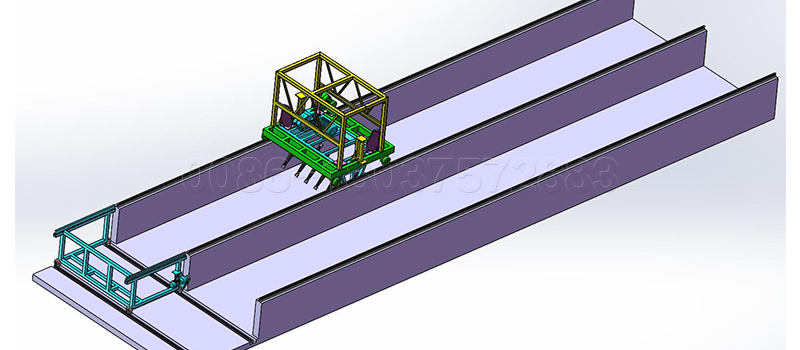Kompostēšanas process ir organisko materiālu degradēšana un stabilizācija ar mikroorganismiem atbilstošā mitruma saturā, skābekļa koncentrācija un citi apstākļi, lai sasniegtu mērķi nogalināt parazītu olas un kaitīgus mikroorganismus. Kompostētais materiāls nesatur patogēnās baktērijas un nezāļu sēklas, Tāpēc tas ir piemērots lietošanai augsnē, lai nodrošinātu kultūru lielāku uztura saturu.
Kompostēšanas process parasti ietver fermentāciju, Pagrieziens un aerācija. Kā ieteikums, rievas tips aerobā kompostēšana ir izplatīšanas sistēma, apgāšanās sistēma un aerācijas sistēma:

1. Rievas tipa kompostēšanas mašīna: Lai atbilstu mitruma un pH prasībām materiālā fermentācijā, jāpievieno dažas mikrobu baktērijas. Pagrieziena mašīna var pilnībā spēlēt tā maisīšanas funkcijai, Uzlabot izejvielu caurlaidību, vienlaikus absorbēt daudz gaisa, un paaugstināt komposta kaudzes temperatūru. Ja temperatūra ir pārāk augsta, tas var atkal absorbēt svaigu gaisu, tā, lai temperatūra atkal pazeminātos.
2. Izplatīšanas kravas automašīna: it can evenly distribute the materials in the composting groove, so that the forklift doesn’t have to go in and out of the grooves frequently. It greatly reduces the transfer cost of raw materials and improve the work efficiency.
3. Moving crane: each groove aerobic composting system is generally composed of 8-10 composting grooves, but generally only need one compost turner. In order to save investment, it’s necessary to switch the position of turning machine between different composting grooves, and the moving crane plays a good role.
4. Aeration system. The function of aeration system is to ventilate and oxygenate the fertilizer materials in grooves, so that the microorganisms in the materials can interact with oxygen, and then the materials can be fully composted to produce valuable humus. It also greatly shortens composting time.
